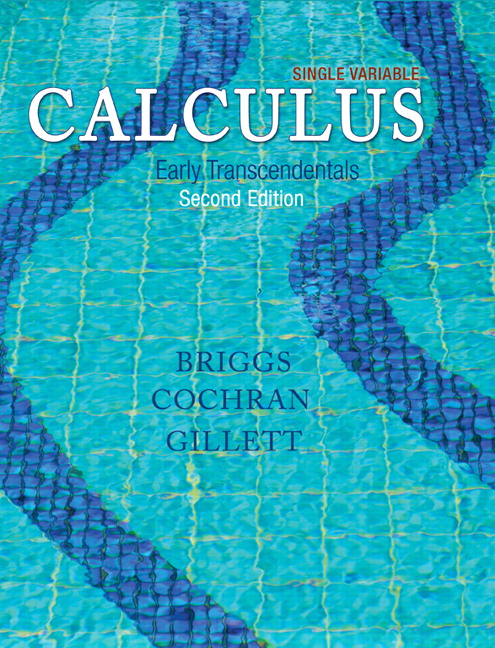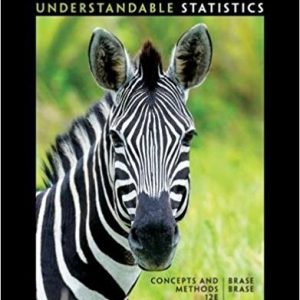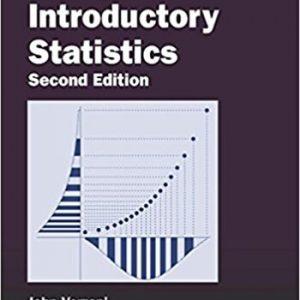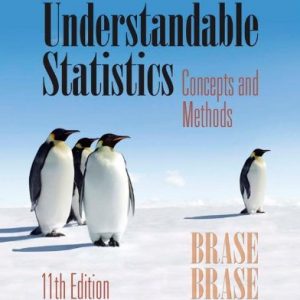Instant download Solution Manual for Single Variable Calculus: Early Transcendentals, 2/E 2nd Edition Bill Briggs, Lyle Cochran, Bernard Gillett pdf docx epub after payment.

Product details:
- ISBN-10 : 9780321965172
- ISBN-13 : 978-0321965172
- Author: William Briggs; Lyle Cochran; Bernard Gillett
This much anticipated second edition of the most successful new calculus text published in the last two decades retains the best of the first edition while introducing important advances and refinements. Authors Briggs, Cochran, and Gillett build from a foundation of meticulously crafted exercise sets, then draw students into the narrative through writing that reflects the voice of the instructor, examples that are stepped out and thoughtfully annotated, and figures that are designed to teach rather than simply supplement the narrative. The authors appeal to students’ geometric intuition to introduce fundamental concepts, laying a foundation for the development that follows.
Table of contents:
Chapter 1: Precalculus Review
1.1 Real Numbers, Functions, and Graphs
1.2 Linear and Quadratic Functions
1.3 The Basic Classes of Functions
1.4 Trigonometric Functions
1.5 Inverse Functions
1.6 Exponential and Logarithmic Functions
1.7 Technology: Calculators and Computers
Chapter Review Exercises
Chapter 2: Limits
2.1 The Limit Idea: Instantaneous Velocity and Tangent Lines
2.2 Investigating Limits
2.3 Basic Limit Laws
2.4 Limits and Continuity
2.5 Indeterminate Forms
2.6 The Squeeze Theorem and Trigonometric Limits
2.7 Limits at Infinity
2.8 The Intermediate Value Theorem
2.9 The Formal Definition of a Limit
Chapter Review Exercises
Chapter 3: Differentiation
3.1 Definition of the Derivative
3.2 The Derivative as a Function
3.3 Product and Quotient Rules
3.4 Rates of Change
3.5 Higher Derivatives
3.6 Trigonometric Functions
3.7 The Chain Rule
3.8 Implicit Differentiation
3.9 Derivatives of General Exponential and Logarithmic Functions
3.10 Related Rates
Chapter Review Exercises
Chapter 4: Applications of the Derivative
4.1 Linear Approximation and Applications
4.2 Extreme Values
4.3 The Mean Value Theorem and Monotonicity
4.4 The Second Derivative and Concavity
4.5 L’Hôpital’s Rule
4.6 Analyzing and Sketching Graphs of Functions
4.7 Applied Optimization
4.8 Newton’s Method
Chapter Review Exercises
Chapter 5: Integration
5.1 Approximating and Computing Area
5.2 The Definite Integral
5.3 The Indefinite Integral
5.4 The Fundamental Theorem of Calculus, Part I
5.5 The Fundamental Theorem of Calculus, Part II
5.6 Net Change as the Integral of a Rate of Change
5.7 The Substitution Method
5.8 Further Integral Formulas
Chapter Review Exercises
Chapter 6: Applications of the Integral
6.1 Area Between Two Curves
6.2 Setting Up Integrals: Volume, Density, Average Value
6.3 Volumes of Revolution: Disks and Washers
6.4 Volumes of Revolution: Cylindrical Shells
6.5 Work and Energy
Chapter Review Exercises
Chapter 7: Techniques of Integration
7.1 Integration by Parts
7.2 Trigonometric Integrals
7.3 Trigonometric Substitution
7.4 Integrals Involving Hyperbolic and Inverse Hyperbolic Functions
7.5 The Method of Partial Fractions
7.6 Strategies for Integration
7.7 Improper Integrals
7.8 Numerical Integration
Chapter Review Exercises
Chapter 8: Further Applications of the Integral
8.1 Probability and Integration
8.2 Arc Length and Surface Area
8.3 Fluid Pressure and Force
8.4 Center of Mass
Chapter Review Exercises
Chapter 9: Introduction to Differential Equations
9.1 Solving Differential Equations
9.2 Models Involving y’=k(y-b)
9.3 Graphical and Numerical Methods
9.4 The Logistic Equation
9.5 First-Order Linear Equations
Chapter Review Exercises
Chapter 10: Infinite Series
10.1 Sequences
10.2 Summing an Infinite Series
10.3 Convergence of Series with Positive Terms
10.4 Absolute and Conditional Convergence
10.5 The Ratio and Root Tests and Strategies for Choosing Tests
10.6 Power Series
10.7 Taylor Polynomials
10.8 Taylor Series
Chapter Review Exercises
Chapter 11: Parametric Equations, Polar Coordinates, and Conic Sections
11.1 Parametric Equations
11.2 Arc Length and Speed
11.3 Polar Coordinates
11.4 Area and Arc Length in Polar Coordinates
11.5 Conic Sections
Chapter Review Exercises
Chapter 12: Vector Geometry
12.1 Vectors in the Plane
12.2 Three-Dimensional Space: Surfaces, Vectors, and Curves
12.3 Dot Product and the Angle Between Two Vectors
12.4 The Cross Product
12.5 Planes in 3-Space
12.6 A Survey of Quadric Surfaces
12.7 Cylindrical and Spherical Coordinates
Chapter Review Exercises
Chapter 13: Calculus of Vector-Valued Functions
13.1 Vector-Valued Functions
13.2 Calculus of Vector-Valued Functions
13.3 Arc Length and Speed
13.4 Curvature
13.5 Motion in 3-Space
13.6 Planetary Motion According to Kepler and Newton
Chapter Review Exercises
Chapter 14: Differentiation in Several Variables
14.1 Functions of Two or More Variables
14.2 Limits and Continuity in Several Variables
14.3 Partial Derivatives
14.4 Differentiability, Tangent Planes, and Linear Approximation
14.5 The Gradient and Directional Derivatives
14.6 Multivariable Calculus Chain Rules
14.7 Optimization in Several Variables
14.8 Lagrange Multipliers: Optimizing with a Constraint
Chapter Review Exercises
Chapter 15: Multiple Integration
15.1 Integration in Two Variables
15.2 Double Integrals over More General Regions
15.3 Triple Integrals
15.4 Integration in Polar, Cylindrical, and Spherical Coordinates
15.5 Applications of Multiple Integrals
15.6 Change of Variables
Chapter Review Exercises
Chapter 16: Line and Surface Integrals
16.1 Vector Fields
16.2 Line Integrals
16.3 Conservative Vector Fields
16.4 Parametrized Surfaces and Surface Integrals
16.5 Surface Integrals of Vector Fields
Chapter Review Exercises
Chapter 17: Fundamental Theorems of Vector Analysis
17.1 Green’s Theorem
17.2 Stokes’ Theorem
17.3 Divergence Theorem
Chapter Review Exercises
Appendices
A. The Language of Mathematics
B. Properties of Real Numbers
C. Induction and the Binomial Theorem
D. Additional Proofs
ANSWERS TO ODD-NUMBERED EXERCISES REFERENCES
INDEX
Additional content can be accessed online at www.macmillanlearning.com/calculuset4e:
Additional Proofs:
L’Hôpital’s Rule
Error Bounds for Numerical
Integration
Comparison Test for Improper
Integrals
Additional Content:
Second-Order Differential
Equations
Complex Numbers
People also search:
Single Variable Calculus: Early Transcendentals, 2/E 2nd Edition
Single Variable Calculus: Early Transcendentals, 2/E 2nd Edition pdf
Single Variable Calculus: Early Transcendentals
single variable calculus early transcendentals 8th edition answers
|
difference between calculus early transcendentals and single variable |





